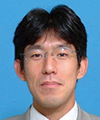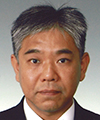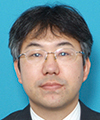 |
|||||||||||||||
|
|
|||||||||||||||
|
Feature Articles: Wireless Access Technology to Meet Diverse Needs from IoT/M2M to Broadband Vol. 15, No. 3, pp. 13–19, Mar. 2017. https://doi.org/10.53829/ntr201703fa3 New Trends in Wireless LAN and Cooperative Wireless LAN TechnologyAbstractAt NTT Access Network Service Systems Laboratories, we are researching and developing wireless local area network (LAN) technology, which is becoming more popular in homes, businesses, and public spaces. This article introduces standardization trends in wireless LAN technology, cooperative wireless LAN technology that solves interference issues in high-density wireless LAN environments such as stadiums, and integration of wireless LAN with cellular networks to realize 5G, the fifth-generation mobile communications system. Keywords: wireless LAN, cooperative wireless LAN, 5G 1. IntroductionWireless local area networks (LANs) can be used in a diverse range of applications including smartphones, game consoles, and drones. NTT has been strengthening the infrastructure for wireless LAN as our third access network platform following the fixed access network and mobile access network as part of our 2012 Medium-term Management Strategy. This has resulted in an increase in public wireless LAN area owners including businesses and local governments. As we look ahead to 2020, we can expect to see further expansion of wireless LANs in stadiums and other such venues. It is also expected that wireless LANs will be used for the fifth-generation mobile communications system (5G) that is being developed to cope with rapidly increasing levels of mobile traffic. 2. Wireless LAN standardization trendsThe latest wireless LAN standard, IEEE* 802.11ac (11ac), supports high-speed communications over 1 Gbit/s, but in environments such as train stations and stadiums where there is a high density of wireless LAN devices, the throughput is liable to be impaired due to increased interference. To address this issue, the Task Group ax (TGax) was set up in the IEEE 802.11 Working Group, which is responsible for wireless LAN standardization, with the primary goal of improving throughput in high-density environments. TGax has been working on the standardization of IEEE 802.11ax (11ax) as a next-generation high-efficiency wireless LAN standard. The main scope of TGax described in the Project Authorization Request, which is the prospectus of the task group, specifies that there must be at least one mode of operation such that the average throughput per user equipment in a high-density environment is at least four times higher than that of conventional equipment. Therefore, if this can be achieved, we can expect a great improvement in user experience compared with 11ac. The following approaches are being discussed in order to achieve the substantial improvements in frequency utilization efficiency that are needed to satisfy this requirement. 2.1 Multi-user transmission technologyMulti-user transmission is a technique whereby wireless signals for multiple terminals are transmitted together. In TGax, two approaches are considered—multi-user multiple input multiple output (MU-MIMO) and orthogonal frequency division multiple access (OFDMA). MU-MIMO is a technique that improves the transmission efficiency by performing spatial multiplexed transmission to multiple terminals using multiple antennas. OFDMA is a technique for flexibly and efficiently sharing frequency resources among multiple terminals. It has been introduced in standards such as Long Term Evolution (LTE) and is expected to be used in many wireless LAN devices due to its ease of implementation. In 11ac, MU-MIMO is introduced only for the downlink, while for 11ax, both MU-MIMO and OFDMA will be adopted for the uplink as well as downlink. With the introduction of multi-user transmission in the uplink, it becomes possible for multiple terminals to transmit simultaneously in the uplink, which is expected to substantially improve the transmission efficiency. Due to the implementation of uplink multi-user transmission, TGax is discussing details such as the specifications of a new control frame called a trigger frame for the purpose of aligning the transmit timings between terminals. 2.2 Technology for improving spatial utilization efficiency of frequency resourcesIn a wireless LAN, the channel status is observed before transmitting packets to avoid collisions between packets, and if the received signal power is greater than a pre-defined threshold, the channel is regarded to be busy and the transmitter defers the transmission. In a conventional wireless LAN, the threshold value at which the channel is judged to be busy had been set to an excessively low value. In high-density wireless LAN environments, throughput degradation becomes more serious due to the increased occurrence of busy judgments, which eventually leads to fewer transmission opportunities. For 11ax, we are discussing how to address this issue by changing the conditions under which a channel is judged to be busy so that the space utilization efficiency of frequencies can be increased. Specifically, when the detected signal is a signal from another cell, transmission is permitted as long as certain conditions are met, thereby facilitating simultaneous transmissions in multiple cells and enabling high-density frequency re-use (Fig. 1). Discussions are also being held on determining a method to link the control of transmission power with the control of threshold values used to judge when a channel is busy.
In addition, there is strong demand for outdoor use, so in 11ax, discussions are being held on matters such as finding a signal format that is highly robust against outdoor radio propagation characteristics and transmission modes that are specialized for long-distance transmission. Standardization of IEEE 802.11ax is currently expected to be completed by the end of 2018. It is very likely that equipment conforming to the draft standard of 11ax will start to appear before completion of the standardization. It is assumed that equipment conforming to 11ax will become commonplace around 2020.
3. Cooperative wireless LAN technology for ultra-high-density wireless LAN servicesIn the 5G/11ax era, it is expected that the number of wireless LAN access points (APs) will further increase in order to cope with IoT (Internet of Things) and ultra-broadband services. However, since the frequency bandwidth used by wireless LANs is limited, in situations where APs are installed at high density, the number of cases where the same channel is shared by multiple APs in the same vicinity is increasing. Also, with the evolution of wireless LAN standards, we are seeing the expansion and diversification of radio parameters both in the frequency domain and in the spatial domain such as the frequency bandwidth, the number of spatial multiplexed streams, and the transmit power. In this sort of situation, it is difficult to obtain adequate performance by using autonomous distributed APs. To make efficient use of limited radio resources in order to accommodate more terminals and traffic, it is effective to perform centralized radio resource management by taking information about the surrounding radio environment into consideration. Cooperative wireless LAN technology makes it possible to use radio resources with high efficiency by means of centralized control of the APs in order to provide carrier-grade communication quality. A radio resource management engine (RRME) that controls the AP performs centralized management of radio environment information obtained from the AP, and sets suitable radio parameters for each AP so as to improve system throughput by avoiding throughput reductions caused by interference. In crowded places such as stadiums and train stations, the radio environment information acquired by each AP is collected, and the optimal radio parameters calculated by resource allocation based on the area throughput optimization policy (RATOP) algorithm [1] in the RRME are set in each AP so as to optimize the frequency and spatial resources. Consequently, the RRME can reduce interference and improve the throughput of the system (Fig. 2). In addition, it can prioritize the allocation of frequency bandwidth to APs carrying heavy traffic, enabling systems to be designed flexibly.
Also, by applying cooperative wireless LAN technology to distributed smart antenna systems (D-SAS) where there are many parameters and the area design is very difficult (Fig. 3), it is possible to further increase the density of AP placement by optimizing the parameters of APs with D-SAS, enabling the implementation of high quality wireless LAN services with higher throughput.
4. Integration of wireless LAN into cellular networksTo accommodate increasing levels of mobile traffic, some traffic is being offloaded to wireless LANs. Since the frequency resources available for cellular communications are limited, active steps are being taken to use unlicensed frequencies in the 5-GHz band used by wireless LANs wherever possible. In 5G, a heterogeneous network is envisioned that combines multiple wireless access technologies [2], and it is expected that wireless LANs will increasingly be integrated with cellular networks as a type of wireless cell carrying user data. To facilitate cooperation between wireless LANs and cellular networks, the 3GPP (3rd Generation Partnership Project) is standardizing LWA (LTE-WLAN Aggregation) and LWIP (LTE WLAN Radio Level Integration with IPsec Tunnel) [3] in order to implement integration at the radio access network level, allowing for seamless connections between wireless LANs and cellular networks. Additionally, traffic integration using multipath TCP (Transmission Control Protocol) [4] has been implemented as a method for the integrated use of wireless LANs and cellular networks without adding functionality to the cellular networks. The choice between a wireless LAN and a cellular network is set by ANDSF (Access Network Discovery and Selection Function) in 3GPP [5], which controls the selection of access networks from a cellular network. The integration of wireless LANs into cellular networks in 5G is probably based on these techniques but requires technology that can improve the user’s quality of experience (QoE) in situations where wireless cells with diverse characteristics are arranged more densely. Unlicensed band platform technology (Fig. 4) creates a database of information such as wireless environment information for unlicensed bands and cellular network quality information, and performs optimal control from the network side of the terminal attributes and AP settings according to a particular algorithm based on this information. Wireless resources can be used more efficiently by controlling the CSMA/CA (Carrier Sense Multiple Access/Collision Avoidance) wireless LAN access method via cellular networks. For example, to alleviate the hidden node and exposed node problems that typically occur in unlicensed band wireless systems, the platform collects information about transmission delays and the reception rate of wireless LAN beacon signals from terminals and APs. The control engine analyzes the relationships of hidden nodes and exposed nodes and improves the communication quality by optimizing the AP channel arrangement and the APs to which terminals are allocated in order to cancel out these hidden and exposed nodes [6]. With this technology, the aim is to achieve at least double the system throughput of current networks by systematically optimizing the diversity of wireless access technologies that constitute 5G (including wireless LAN) in order to improve the user’s QoE.
5. Future prospectsNTT Access Network Service Systems Laboratories intends to continue developing wireless LANs as part of the social infrastructure by working on the standardization of high-efficiency wireless LANs, using cooperative wireless LAN technology to increase the system throughput, and carrying out research and development on the application of wireless LANs to 5G. References
|
|||||||||||||||












